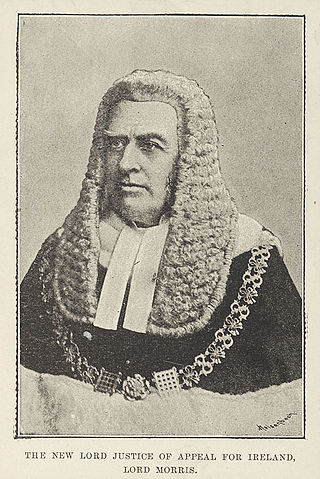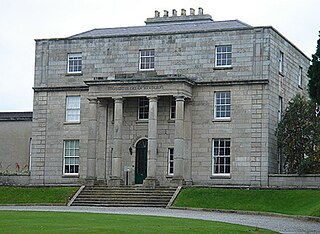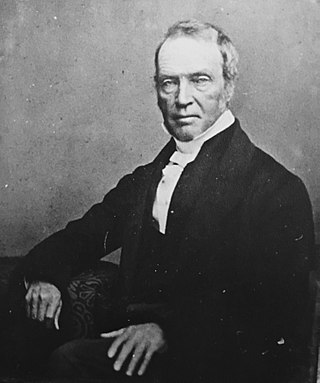Related Research Articles

The Solicitor-General for Ireland was the holder of an Irish and then United Kingdom government office. The holder was a deputy to the Attorney-General for Ireland, and advised the Crown on Irish legal matters. On rare occasions, there was also a Deputy Attorney-General, who was distinct from the Solicitor-General. At least two holders of the office, Patrick Barnewall (1534–1550) and Sir Roger Wilbraham (1586-1603), played a leading role in Government, although in Barnewall's case, this may be partly because he was also King's Serjeant. As with the Solicitor General for England and Wales, the Solicitor-General for Ireland was usually a barrister rather than a solicitor.
Sir Richard Bellings (1613–1677) was a lawyer and political figure in 17th century Ireland and in the Wars of the Three Kingdoms. He is best known for his participation in Confederate Ireland, a short-lived independent Irish state, in which he served on the governing body called the Supreme Council. In later life, he also wrote a history of the Confederate period, which is one of the best historical sources on the Confederation.

The Attorney-General for Ireland was an Irish and then United Kingdom government office-holder. He was senior in rank to the Solicitor-General for Ireland: both advised the Crown on Irish legal matters. With the establishment of the Irish Free State in 1922, the duties of the Attorney-General and Solicitor-General for Ireland were taken over by the Attorney General of Ireland. The office of Solicitor-General for Ireland was abolished at the same time for reasons of economy. This led to repeated complaints from the first Attorney General of Ireland, Hugh Kennedy, about the "immense volume of work" which he was now forced to deal with single-handedly.

Richard Moore PC was an Irish lawyer and judge.
Lettice FitzGerald, 1st Baroness Offaly was an Irish noblewoman and a member of the FitzGerald dynasty. Although she became heiress-general to the Earls of Kildare on the death of her father, the title instead went to the next FitzGerald male heir when her grandfather, the 11th Earl of Kildare, died in 1585. In 1620, she was created suo jure Baroness Offaly by King James I of England.

Richard Wilson Greene PC, KC (1791–1861) was an Irish barrister and judge.

John Bathe was an Irish barrister and judge. He was a member of a famous legal dynasty, and had a distinguished career under the Tudors, holding office as Solicitor General for Ireland and Chief Justice of the Irish Common Pleas.
Sir Thomas Rochfort (c.1450-1522) was a distinguished Irish judge and cleric who held the offices of Solicitor General for Ireland, Master of the Rolls in Ireland, and Dean of St. Patrick's Cathedral.
The Rochfort family came to Ireland in the thirteenth century and acquired substantial lands in counties Kildare, Meath and Westmeath. Several members of the family were prominent lawyers and politicians. They gained the title Earl of Belvedere, and gave their name to the village of Rochfortbridge. The main Rochfort line ended with the death of the 2nd Earl of Belvedere in 1814.
Nicholas Nugent was an Anglo-Irish judge, who was hanged for treason by the government that appointed him. He had, before his downfall, enjoyed a highly successful career, holding office as Solicitor General for Ireland, Baron of the Irish Court of Exchequer, and Chief Justice of the Irish Common Pleas, but he was ruined by the rebellion of his nephew William Nugent, which he was accused of supporting.
Sir Lucas Dillon, also called Luke, was a leading Irish barrister and judge of the Elizabethan era who held the offices of Attorney General for Ireland and Chief Baron of the Irish Exchequer. He supported the Lord Deputy Henry Sidney in the cess controversy and the Lord Deputy John Perrot in the Desmond Rebellions. He was held in high regard by Queen Elizabeth, but was accused by his enemies of corruption and maladministration.
Sir James Dowdall was an Irish judge of the Elizabethan era who briefly held office as Lord Chief Justice of Ireland. He should not be confused with James Dowdall, the Catholic martyr, who was his cousin.
Henry Burnell was an Irish judge and politician; he served briefly as Recorder of Dublin and as a justice of the Court of King's Bench. Though he was willing to accept Crown office, he spent much of his career in opposition to the Government. He was one of the leaders of the protest against the policies of the Lord Deputy of Ireland Sir Henry Sidney in the late 1570s, and as a member of the Irish House of Commons in the 1580s he successfully opposed Sidney's successor, Sir John Perrot. In the early 1600s, he was one of the leaders of the protest against strict enforcement of the Penal Laws. His professional reputation was gravely damaged in his later years by a verdict that he was guilty of forgery, when he was convicted and fined for having altered a deed concerning the inheritance of the 11th Earl of Kildare's estate. He was the grandfather of the playwright Henry Burnell.
Edward Fitz-Symon was a leading Irish barrister and judge of the Elizabethan era. He held the offices of Attorney General for Ireland, Serjeant-at-law (Ireland) and very briefly Master of the Rolls in Ireland. Despite his appointment to these senior offices, he was derided by his contemporaries as being a man of "mean learning". His family were Lords of the Manor of Baldoyle for several generations.
Patrick Segrave was an Irish judge of the early seventeenth century, who was removed from office for numerous incidents of corruption.

The Court of Castle Chamber was an Irish court of special jurisdiction which operated in the sixteenth and seventeenth centuries.
Jesse Smythes was an English born judge and colonist in Elizabethan Ireland. He held office as Solicitor General for Ireland and Chief Justice of Munster, and was heavily involved in the Plantation of Munster. He was noted for his deep hostility to the native Irish, which was even more virulent than that of the average English colonist of the time.
The chief justice of Munster was the senior of the two judges who assisted the Lord President of Munster in judicial matters. Despite his title of Chief Justice, full judicial authority was vested in the lord president, who had "power to hear and determine at his discretion all manner of complaints in any part of the province of Munster", and also had powers to hold commissions of oyer and terminer and gaol delivery.
John Bathe (1536-1586) was an Irish lawyer and statesman of the sixteenth century. He held several important offices, including that of Attorney General for Ireland and Chancellor of the Exchequer of Ireland. He was a member of a prominent landowning family from County Dublin, and himself added to the family estates. His children included the Jesuit William Bathe, who was a noted musicologist.
Richard Finglas was an Irish barrister and Law Officer of the sixteenth century.
References
- ↑ The family name was also spelt Bealing
- 1 2 3 4 Ball, F. Elrington History of the Parishes of Dublin Vol. 6 University Press 1920 p.40
- ↑ Crawford, Jon G. A Star Chamber Court in Ireland- the Court of Castle Chamber 1571-1641 Four Courts Press Dublin 2005 pp.233-4
- ↑ Hart, A.R. History of the King's Serjeant-at-law in Ireland Four Courts Press 2000 p.42
- ↑ Smyth, Constantine Joseph Chronicle of the Law Officers of Ireland Dublin 1839 p. 174
- ↑ Wedgwood, C. V. Thomas Wentworth, 1st Earl of Strafford 1593-1641- a revaluation Phoenix Press reissue 2000 pp.142-3